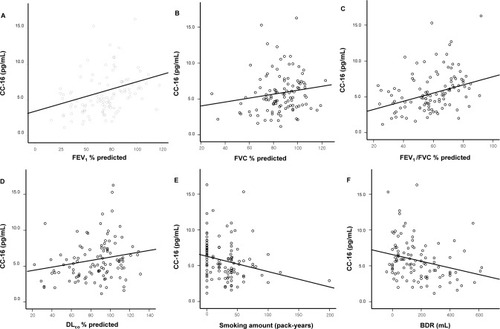Figures & data
Table 1 Comparison of the baseline characteristics of patients with different chronic inflammatory airway diseases
Figure 1 Serum CC-16 levels in chronic inflammatory airway diseases according to disease classification.
Abbreviations: ACO, asthma–COPD overlap; BDR, bronchodilator response; CC, club cell secretory protein; COPD, chronic obstructive pulmonary disease.

Figure 2 Correlation between serum CC-16 levels and parameters.
Abbreviations: BDR, bronchodilator response; CC, club cell secretory protein; DLCO, diffusing capacity of the lung for carbon monoxide; FEV1, forced expiratory volume in 1 second; FVC, forced vital capacity.

Table 2 Comparison of frequent and nonfrequent exacerbators
